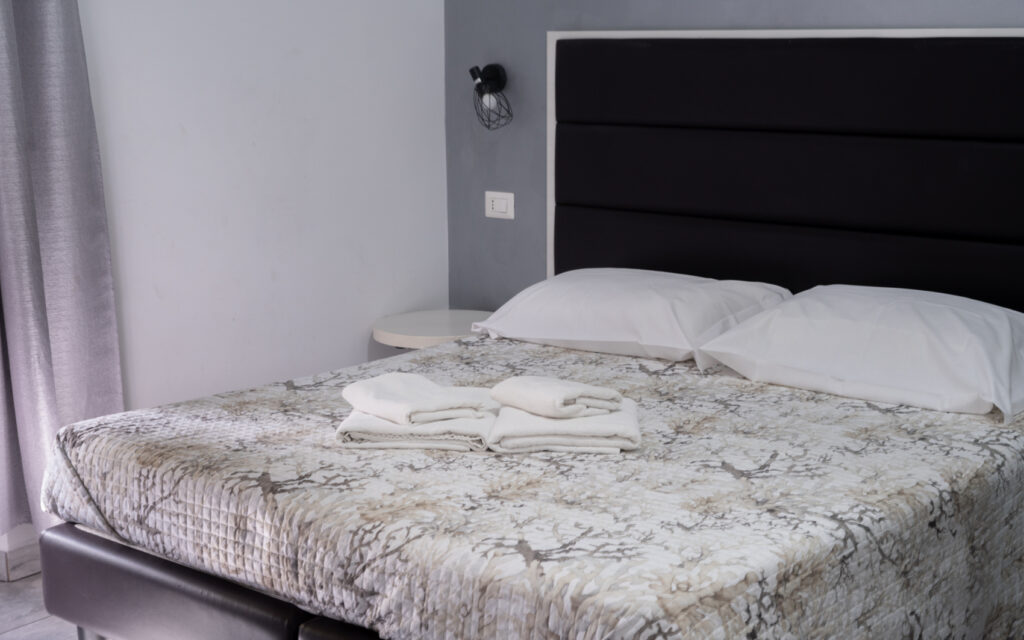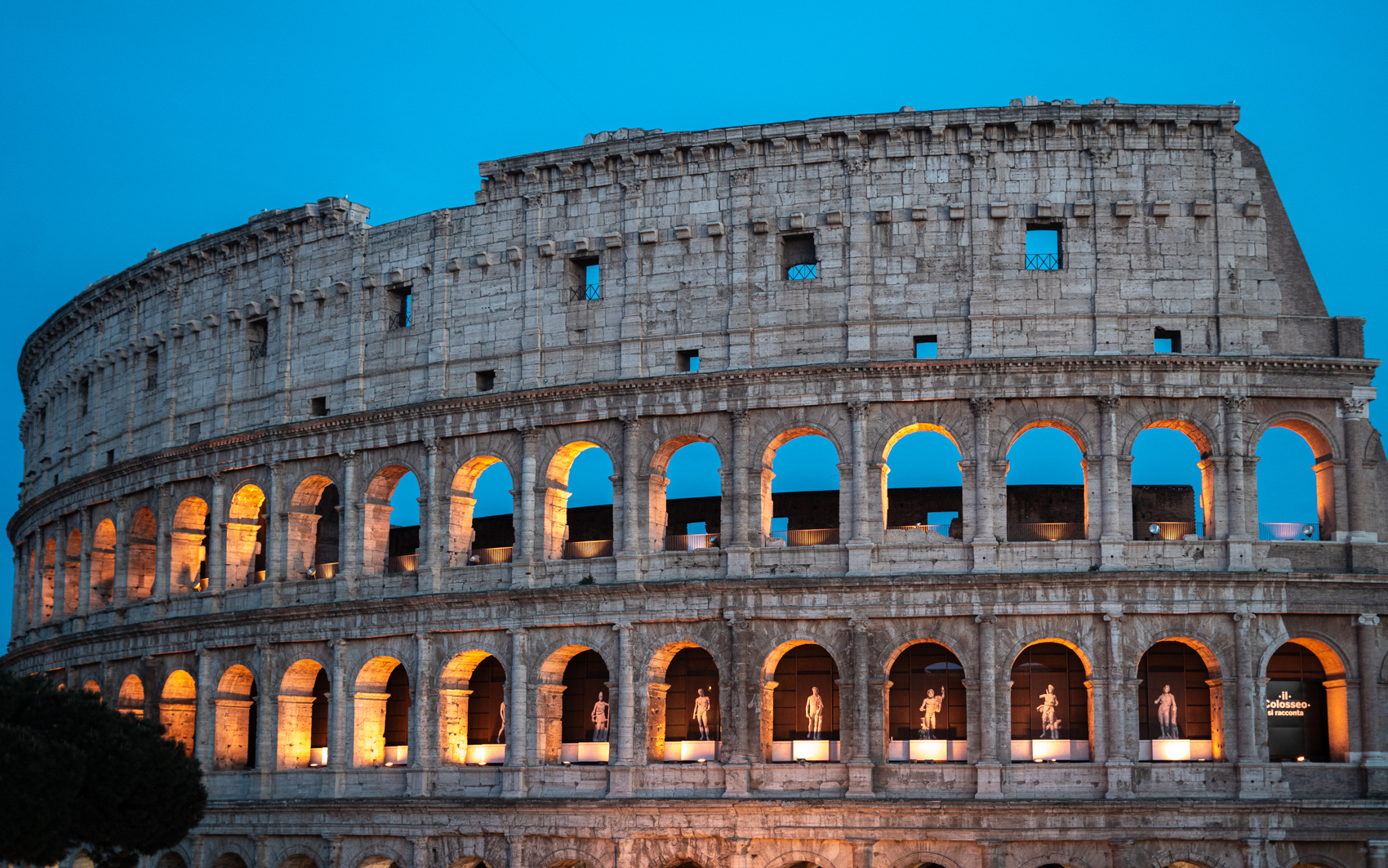Rome Overnight Layover: One-Day Itinerary for Must-See Highlights
Do you have a longer transfer or an overnight layover in Rome? I have good news for you: you can visit a lot of things!

Well, Rome deserves a couple of days, even weeks of exploration. But don’t let that discourage you. An overnight layover in Rome is a fantastic addition to your travel itinerary.
Here’s a plan to help you maximise your 1 day in Rome. And visit the most iconic sights even with limited time on hand.
See the Colosseum, Pantheon, Trevi Fountain, and even the Vatican. All this and more during a one-night stay in the Eternal City.
But get ready for plenty of walking! Or, you can use the metro, but in such a short time, you see much more wandering around on foot.
We arrived in Rome from the Amalfi Coast in the early afternoon. That gave us little under 24 hours in the city before catching our flight the next afternoon.
It had been a while since our last visit, so we decided to stay overnight in Rome. And rediscover the city’s highlights. Of course, also to eat some carbonara pasta and fantastic ice cream. All while admiring the architectural marvels that are around every corner of Rome.
The itinerary presented here is ideal for first-timers. And includes all the must-see landmarks. Optimised for a 24-hour stopover in Rome.
It’s divided into two parts: an afternoon/evening walk and morning sightseeing.
If you have a one-night layover or a full day in Rome, you can follow this itinerary without modification.
During a shorter layover, you can choose from one of the two itineraries. (Keep in mind you need at least 5 hour, but ideally more like 7 or 8 hours.)
The itinerary is divided into 2 parts:
- Afternoon / Evening Walk in the City. Highlights: Colosseum, The Triumphal Arch of Constantine, The Forum Romanum / Trevi Fountain / Pantheon
- Morning Sightseeing: Spanish Steps / Shopping Street / The River Bank / Castel Sant’Angelo / Vatican
If you arrive in Rome later in the afternoon like we did, you might worry that many attractions are closed. But you don’t need to enter the monuments to be able to appreciate them. Many of the landmarks on this list are well visible from the exterior. For example, the illuminated building of the Colosseum is stunning. And most impressive when admired from the outside.
If you’re short on time, walking around allows you to soak in as much of Rome as possible. Plus, it’s free!
Rome is majestic during the evening. All the monuments are well-lit, filling the city with a sense of grandeur.
The necessary starting point: Roma Termini Station
Rome’s central station may not be the highlight of the city. Still, it’s a necessary stop for many travelers. Whether you arrive at Fiumicino or Ciampino Airport, or by train from elsewhere in Italy, chances are you’ll end up at Termini.
Good thing, the Termini Station has a manageable amount of chaos and doesn’t have a threatening vibe. It’s generally safe, but as a major transportation hub, it’s always crowded.
Termini is Rome’s main train station. Every day, about 800 trains pass through, carrying almost half a million passengers. So keep your valuables close to you and don’t leave your luggage unattended.
The Map for the Evening Walk
Ice Cream and / or Cafe
The Termini station is a Perfect pit stop for a quick refreshment.
It’s my ritual to drink an espresso here as soon as I get off the train.
In Italy, it’s said that the busy cafes serve the best espresso. Why? Because the espresso machine is constantly in use, keeping it warm. The right temperature ensures a richer flavor in every cup.
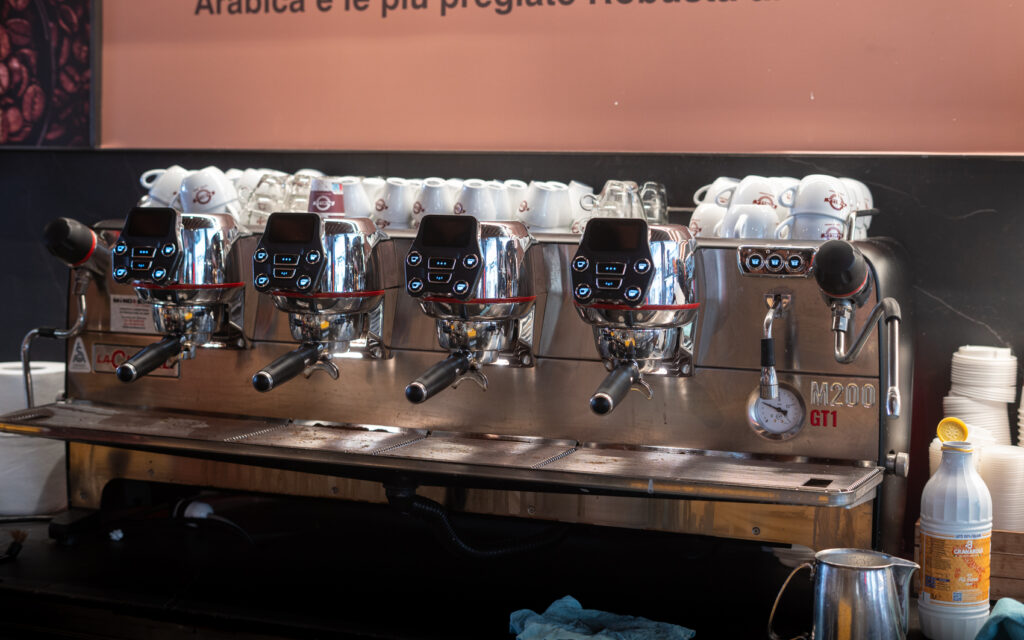
Want to enjoy an espresso “al volo” like the Italians do?
Here’s how: Start by paying at the cashier. Then, order a coffee (which always means espresso unless specified otherwise). After payment move to the bar counter. Present your receipt to the barista. The barman will serve you quickly and you can drink your coffee “al volo,” standing at the bar.
A cafe consumed at the bar, standing near the counter, usually costs between 1.20 and 2 euros.
If you’re feeling hungry, you can grab a pastry, but the sandwiches here aren’t the best value. There is a supermarket on the side of the station accessible from outside. (Via Marsala side, on your right if you’re standing with your back to the train tracks).
For a one-night layover in Rome, consider staying in a hotel near the Termini. It may not be the most glamorous area of Rome, but it’s strategically located. With great access to transportation options. And easy to get back to the airport the next day.
Termini Station has several ice cream shops inside, with our top pick being Grom. It’s good a warm-up before sampling more gelato in the city. Just for comparison sake of course.
Want to set the bar high from the start? Head straight to the famous Venchi. They also have a store inside the station.
So let’s start sightseeing:
Our first stop: the iconic Colosseum.
We started our walking late afternoon, so we arrived here right for the sunset.
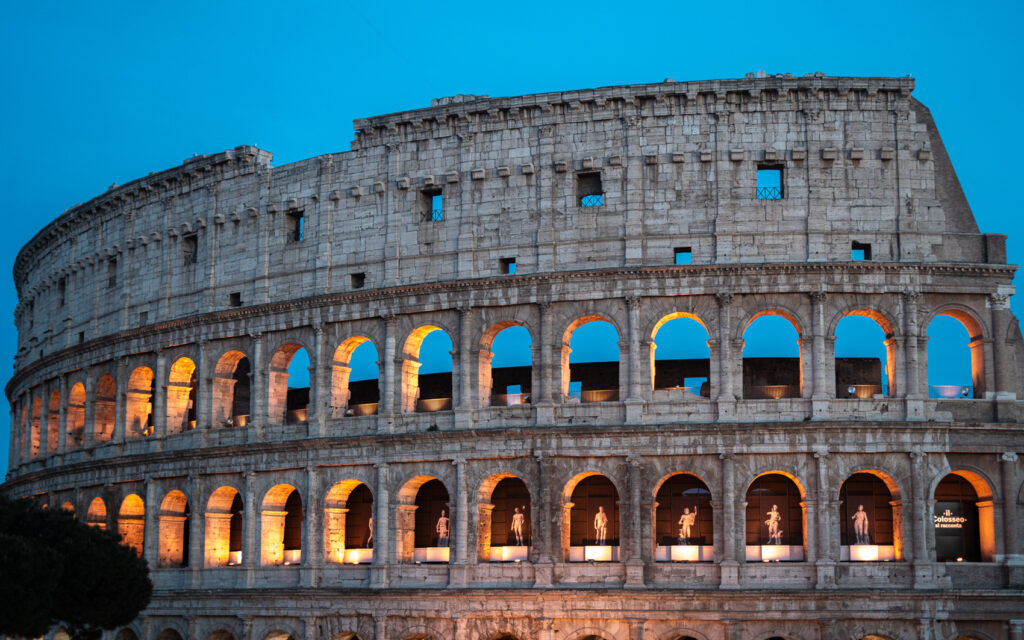
The Colosseum is easily reachable from Termini by walking down the Via Cavour. When you arrive at the crossroads near the Cavour Metro station, you will already see it. Once you’re in the vicinity, you can navigate through the alleyways or follow Via degli Annibaldi. Which leads to one of the best viewpoints. At the beginning of Via Nicola Salvi, slightly elevated above the Colosseum, you’ll find a terrace-like area. It’s a popular spot, with people taking selfies and enjoying the scenery. From here, you’ll get a stunning view overlooking the monument.
Tip: If you’re traveling from the airport to Rome by taxi, ask the driver to drop you off near the Colosseum. You can store your luggage at the airport’s luggage deposit. Bring along only a small bag with essentials for your overnight stay to save time.
Quick interesting things to know:
While often called the Colosseum, its real name is Amphitheatrum Flavium. Named after the emperors of Flavian Dynasty, who commissioned its construction. Construction began in 72 AD under Emperor Vespasian. The Amphiteatre was completed in AD 80 under his successor Titus.
The building got its nickname, “Colosseum” from a bronze statue once standing nearby. The Colossus of Emperor Nero was approximately 35 meters (115 feet) tall. Nearly the same height as the Statue of Liberty (without its raised arm). The statue itself is lost to time, but its foundation is still visible.
Architectural Insight: Notice how the capitals atop the columns vary on each level. The Colosseum is like a visual lesson in the evolution of classic architecture. The bottom row features the oldest Greek order, the Doric style. The second floor has Ionic columns, And the third is Corinthian. The columns on the fourth-level colonnade are the Roman version. Known as the Composite capital. It’s a blend of elements of Ionic and Corinthian-style capitals. As it features both the spiral volute and the acanthus leaves. Capital or “capitello“: the uppermost part, the crowning member of the column.
Today’s stadiums still follow the layout of sectors, invented by the Romans. The Amphitheater in Verona is in use even today and often hosts concerts.
After admiring the Colosseum from the terrace, walk down to the ground nearby.
Here stands the Arch of Constantine
This triumphal arch is dedicated to Constantine the Great. And was built in a later era (AD 312) than the Colosseum.

Interestingly, many decorative elements weren’t made for this triumphal arch. For example the round pairs of reliefs above the 2 smaller arches. They were repurposed from an earlier monument ( Hadrian period). This was a common practice during that time and signs the slow decline of the empire.
Walking on the Via Dei Fori Imperiali
Continuing down the road of Dei Fori Imperiali. Towards the Monument of Victor Emmanuel II.
To your left lies the Forum Romanum. Once center of ancient Rome, and the heart of the Roman Empire. Unfortunately, we find its closed when we arrived, but if you find it open, its worth to walk inside. Otherwise you can sea some of the important monuments from outside.
Keep walking, and you’ll see smaller imperial forums on your left. This ruins are well visible even in the evening.
The curious half-circle shaped structures are the Markets of Tiberius.
Here we reach our second stop: The Triumphal Column of Trajan (A.D. 113)
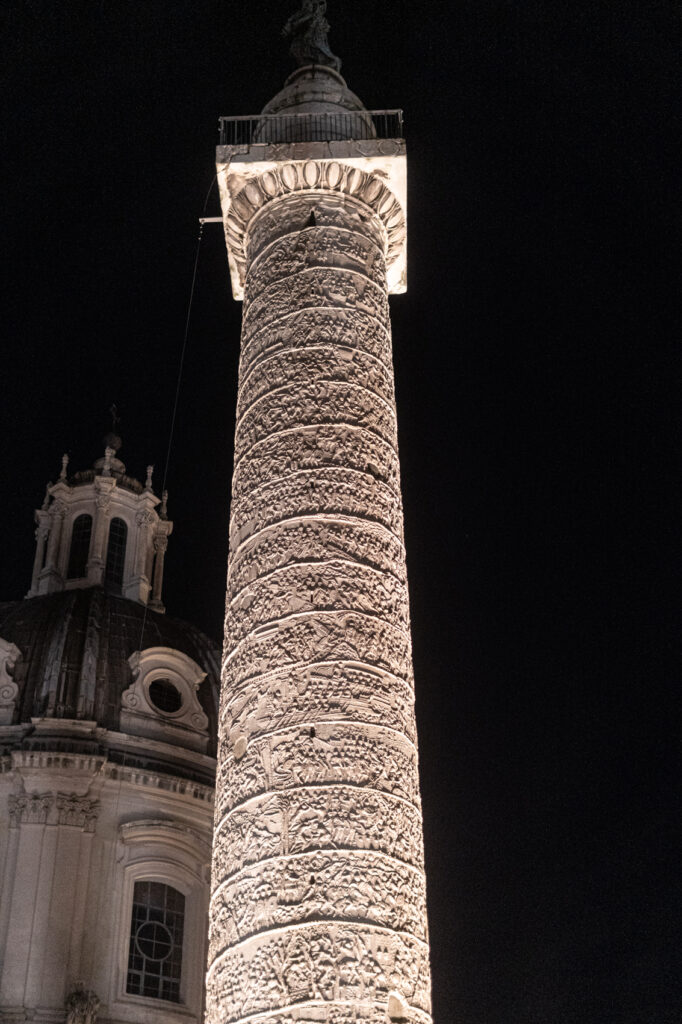
The column is well-illuminated in the evening, and you can get quite close to it.
It commemorates the Emperor Trajan’s victory over Dacia.
The triumphal column illustrates Trajan’s wars in Dacia with plenty of battle scenes. Observe the intricate details. Naval battles, and soldiers on horseback, are all meticulously sculptured.
The figure of the old man on the bottom symbolizes the Danube River. The soldiers needed to cross over the Danube, to conquer Dacia.
The column’s narrative is in a chronological sequence from bottom to top.
Next stop: Monument of Victorio Emanuelle II (
Piazza Venezia)
The modern monument of Victorio Emanuelle II between 1885 and 1935. Also known as the Altare della Patria (“Altar of the Fatherland”). The monument celebrate the unity of Italy under Victor Emmanuel II, the first king of a unified Italy.
A prominent, and well visible landmark from many directions. So it’s an easy orientation point in the city.
From here, continue walking on the Corso avenue.
The Via del Corso is filled with shops, boutiques and ice cream shop.
You’ll find indications to turn right onto one of the smaller streets to reach the Trevi Fountain.
The Trevi Fountain
This monumental fountain is one of the symbols of Rome.
No matter what time you visit, you will most probably always find it crowded.
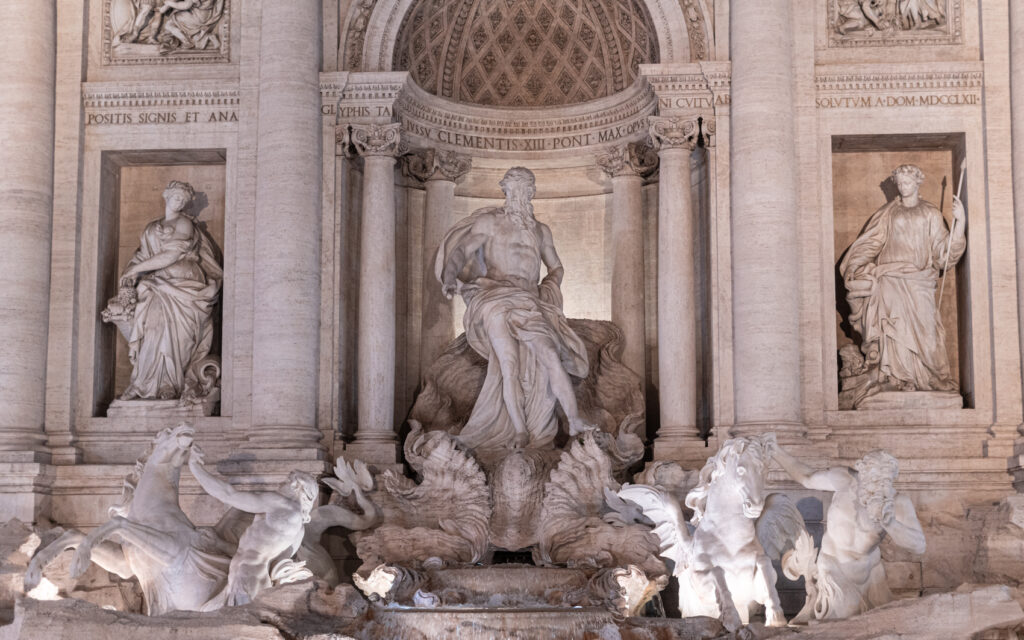
Why people throw coins in the fountain? As per superstition, tossing a coin over your shoulder into the Trevi Fountain would ensure your return to Rome.
This is the fountain where Anita Ekberg bathed in the iconic scene from the Italian movie “La Dolce Vita.”
The 18th-century baroque fountain is one of the largest fountains in the world.
Triumphal Column of Marcus Aurelius (Piazza Colonna)
To reach our next stop, walk back toward the Corso Road.
You’ll see the Triumphal Column of Marcus Aurelius.
This victory colum also has a spiral relief similar to the Trajan column.
The frieze illustrates Marcus Aurelius battles with the Barbarians
From here, you can reach the Pantheon in less than 5 minutes by foot. (Take Via in Aquiro and then turn left at Piazza Capranica.)
The Pantheon
Our final stop for the evening walk is the Pantheon.
This is one of my favorite buildings in Rome.
One of the largest domes of the ancient world. Only the Hagia Sophia could surpass its size, and that was much later.
The walls are robust, about 4 meters thick. They are filled with an early type of concrete. Romans were the inventors of concrete.
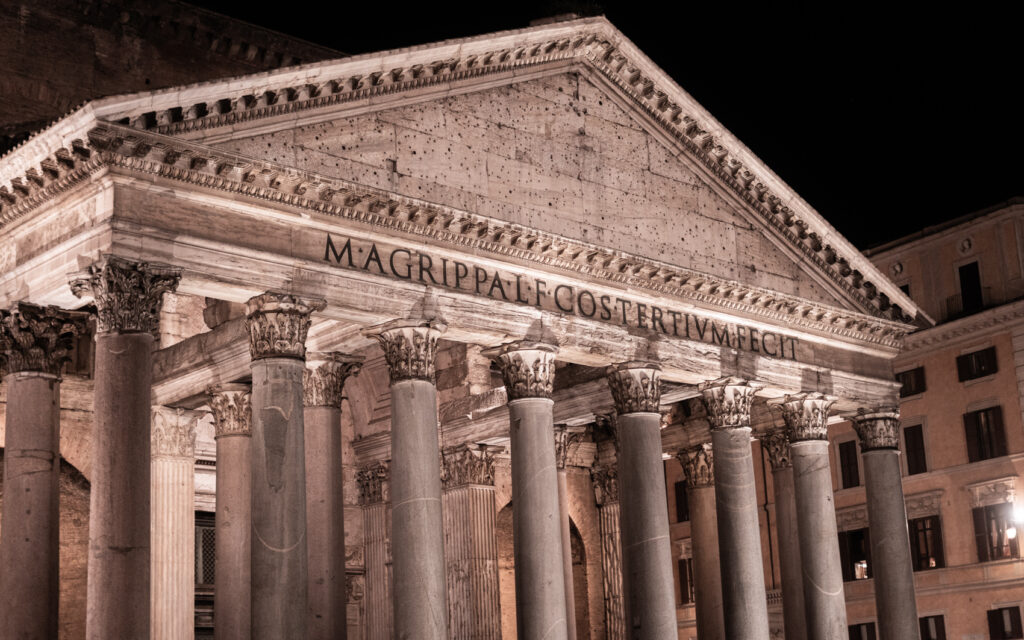
If you arrive late in the evening, you will not be able to visit the interior. But you can wonder under the monumental columns of the entrance.
I highly recommend that you see the Pantheon from inside, if possible. It’s absolutely fabulous. You could consider starting your visit here the next morning. The Pantheon opens at 8:30 am and closes at 7:30 pm, though opening times may vary on weekends.
The square in front of the Pantheon has a fantastic vibe all day, but especially late in the evening.
It’s still bustling with people and street performers even late into the night. A girl was singing an aria when we arrived, and her voice was fantastic. There are plenty of bars and restaurants around where you can enjoy drinks and dinner.
Dinner time in Rome
You can find a place near the pantheon if you like the atmosphere. Or continue towards Piazza Navona, if you still have the energy.
We eat in a place near the Pantheon.
Classic Roman dishes like Carbonara and Amatricana are must-tries.
But be careful as so many places around are tourist traps. So always check the reviews before sitting down.
Other than that, most restaurants around have a very nice atmosphere.
For some of the best food in Rome, visit the Trastevere neighbourhood. But if you are short on time as we were, stick around the center, it’s easier.
After dinner we walked back to our hotel near the Termini. We took a slightly different route this time. And passed by the Quattro Fontane square. This place hides one of the masterpiece of Baroque architecture. If you like the Baroque style, consider visiting the church of San Carlo alle Quattro Fontane.
If you are tired of walking, the closest metro station to the Pantheon is Barberini.
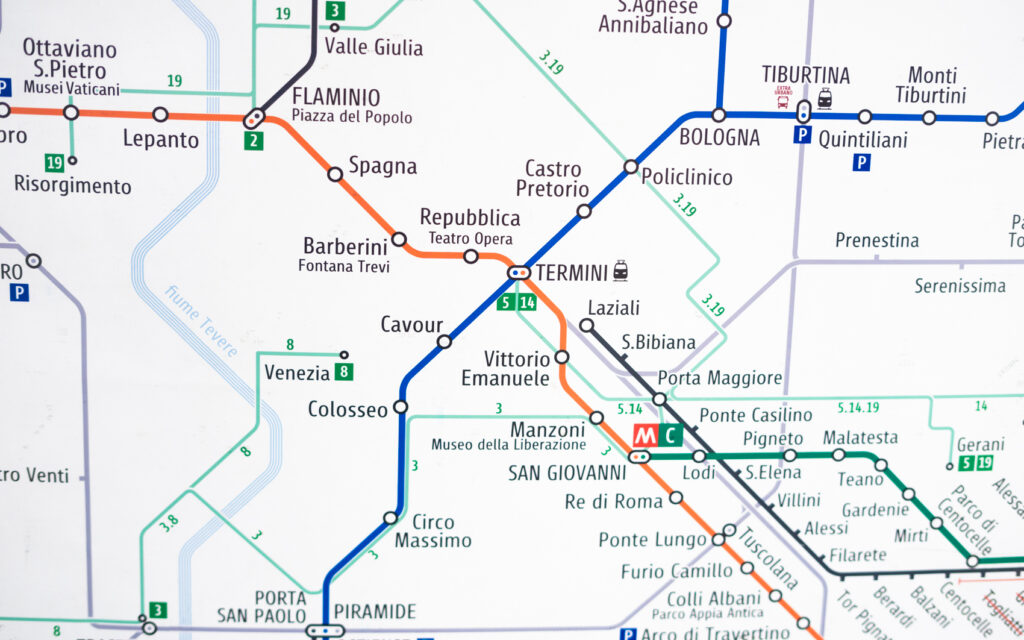
The next morning in Rome
We had a good night’s sleep in our cozy and budget-friendly hotel. But now it’s time to continue the sightseeing. Here is the map of all the places mentioned in this section.
Breakfast
Lucky for me, right next to our hotel was one of the city’s top-rated gluten-free bakeries. (La Pasticciera, Via Varese 43)

If your hotel doesn’t offer breakfast, don’t worry. Our itinerary includes a fantastic second breakfast option as well.
First in Sightseeing Spot: Piazza Spagna
Since our flight from Ciampino is in the afternoon, we have the morning for sightseeing.
To save time, we hop on the metro at Termini Staiton and head to Piazza di Spagna. The subway stops right near the Spanish Steps.
The Spanish Steps are another iconic monument of Rome. This area is also home to many luxury designer shops.
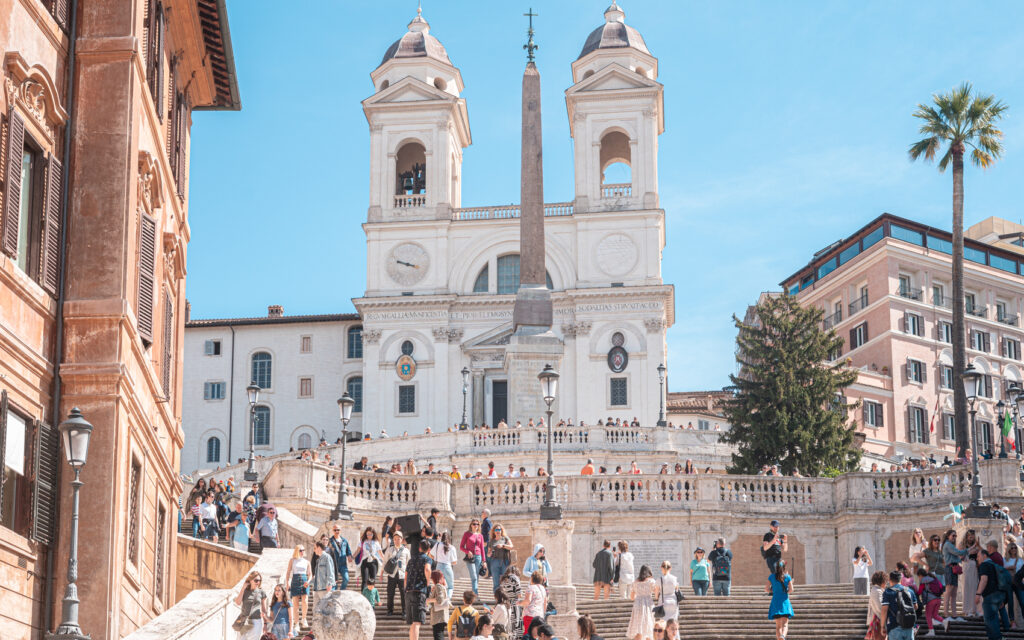
Via Condotti and Rome’s Oldest Café
Take a walk at Via Condotti, lined with some of the most illustrious shops in the city.
The Antico Caffè Greco (Via dei Condotti 86.)
If you don’t know, you may pass by this little cafe.
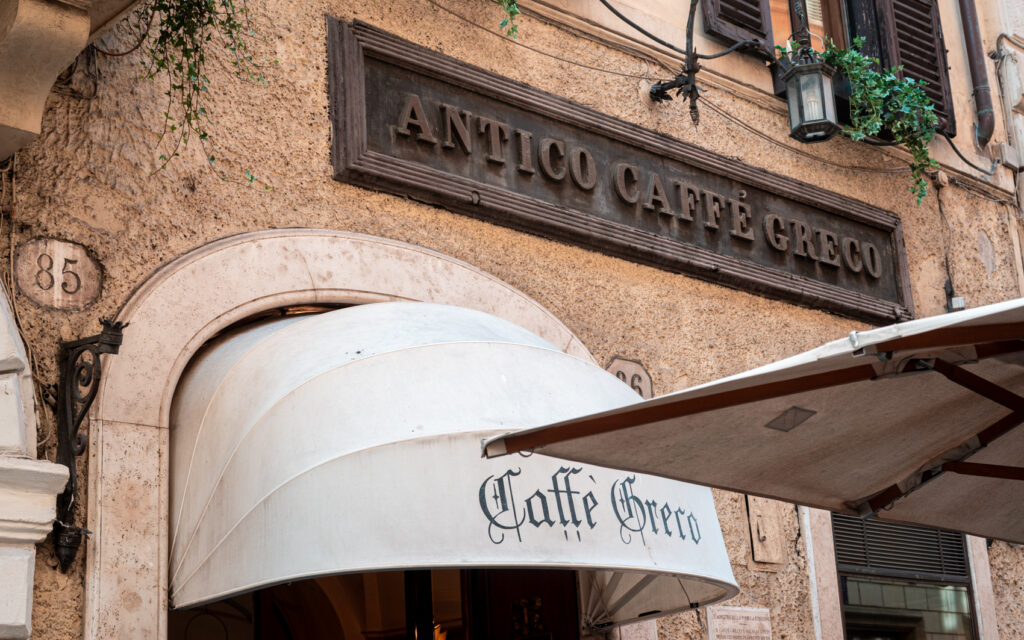
But it’s actually listed among the world’s 10 most beautiful cafes.
Cafe Greco is a great choice for a second breakfast, but sitting down can be a bit pricey.
We opt for a cafe standing at the counter, Italian style.
Still pricier than elsewhere, but worth the experience being a historical cafe.
The River Bank of the Tevere (Tiber)
We take the longer walk towards the river bank. If you’re short on time, you can skip this section of the itinerary. And take the metro directly to the Vatican.
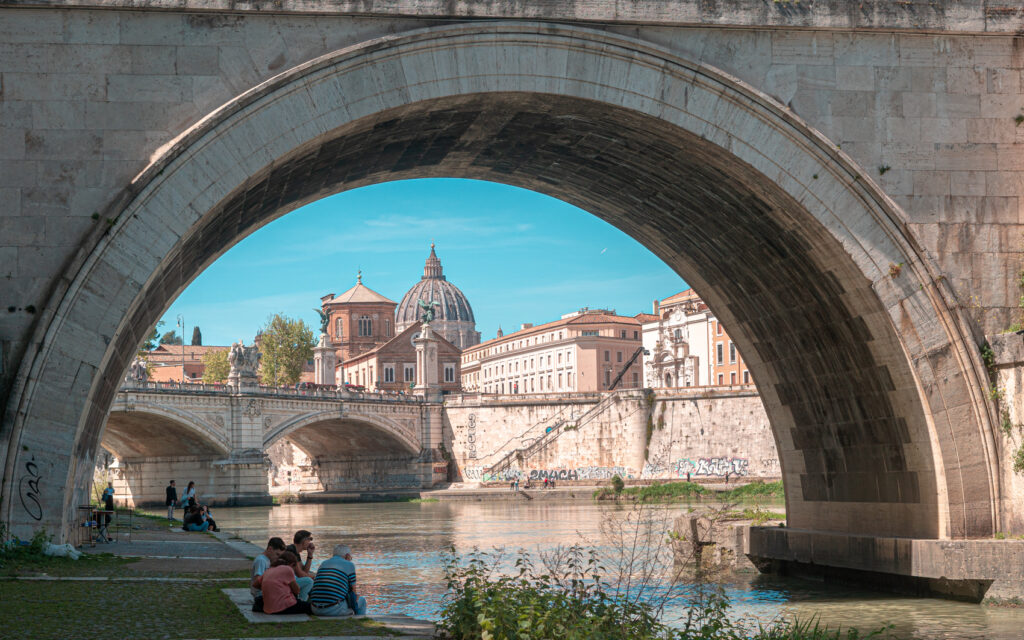
But it’s nice to walk around the River Tiber. When the weather is good, I enjoy the views of the river bank.
Castel Sant’Angelo
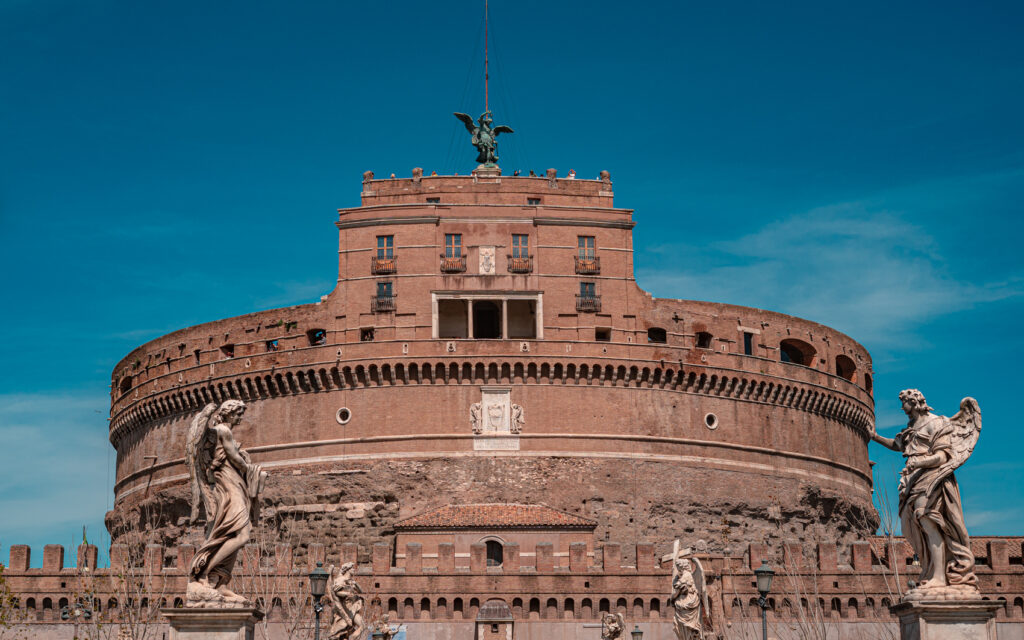
The Castel Sant’Angelo is another one of my favorite monuments in Rome. Surprisingly, it’s less visited than other landmarks in Rome.
That’s good news,As there aren’t long queues to wait to get in. If you have a bit of spare time you can attempt to get a ticket and visit from inside.
It may look like a castle, but it’s not. Originally built as the Mausoleum of Hadrian. Today it’s called Castel Sant’Angelo. We know from ancient sources that, on the top, there was a bronze statue. Featuring a horse-drawn carriage of the emperor. This was later replaced with a more Christian symbol, the angel that stands there today.
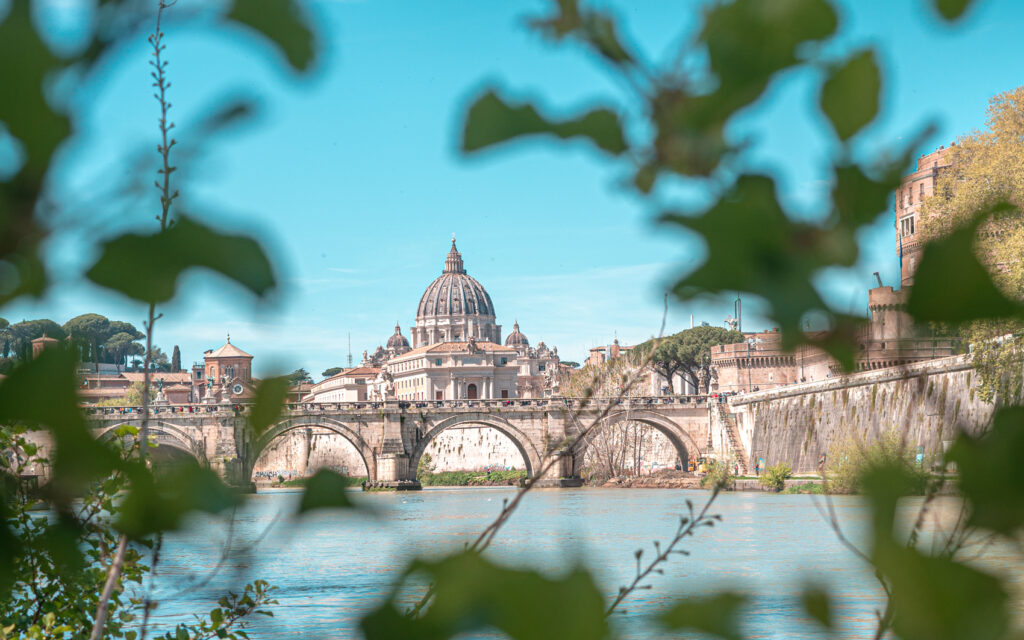
The Vatican and the Saint Peter’s Basilica
From Castel Sant’Angelo, it’s a quick walk to reach the Vatican.
So, yes, in less than 24 hours, you not only visited Rome but actually managed to visit 2 different countries. Congratulations!
St. Peter’s Basilica

The queue is usually quite long To enter St. Peter’s Basilica. Depending on your time and how long the queue is, you may attempt to visit from inside. It’s better to skip other places and start here early in the morning if visiting the Vatican is a priority for you. Especially if you only have a short layover in Rome.
To enter inside the church, there is a security check and a dress code. Shoulders and knees should be covered. Sharp objects are not allowed in. So remember to remove any scissors from your purse or day bag and leave them in your hotel or at the luggage storage.
We ended up wandering around for quite a while, so we had to rush back to the metro. We were just in time to collect our luggage from the hotel and catch the shuttle bus to the airport.
Some Recommendations
Plan out wisely your layover. To maximize your short stay, arrive at key attractions early to avoid crowds and long lines. Especially at popular sites like the Vatican. If you have limited time, prioritize the must-see landmarks. And consider skipping others. Study the transportation schedules to ensure you get back to the airport on time.
How to get to the Airport
Fiumicino (FCO)
The quickest way to get to Fiumicino Airport is the Leonardo Express train. The Leonardo Express departs from Termini Station. This is a direct railway connection to the airport with no intermediate stops.
The price of the ticket is € 14. The journey time is approximately 32 minutes.
A taxi ride from Rome center to Fiumicino Airport should cost around 50€.
Shuttle bus for both Ciampino (CIA) and Fiumicino (FCO)
To get to the airport, I usually use the TerraVision bus service. These coach-style shuttle buses are cheap and run frequently. TerraVision has buses to both Fiumicino and Ciampino airports. They depart from the right side of Termini Train Station. Online ticket cost 6 euro for both airports.
You can book your ticket online for Fiumicino here.
Click here for tickets to Ciampino.
The journey takes around 40-50 minutes, depending on traffic conditions. Tickets for the Terravision shuttle can be purchased online.
Ciampino International Airport (CIA) with public transport:
- Metro + Bus Combo: Take the metro from Termini to Cinecittà and transfer to bus number 520. This is the cheapest option but takes at least 1 hour.
Where to Stay in Rome for a 1 night Layover?
We stayed near the Termini. Not too close to it, but nearby, in a nicer and quieter area.
